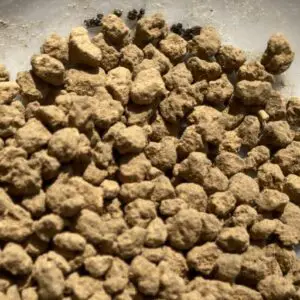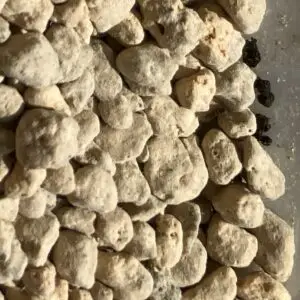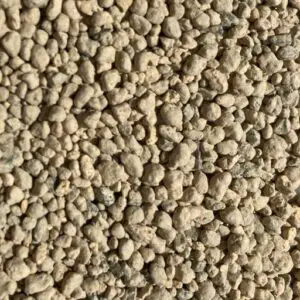You can reuse bonsai soil as long as it is still in good condition and has not degraded yet. Common bonsai soils have a lifespan of 2 to 7 years depending on the type but environmental factors can also affect their longevity.
How long does bonsai soil last?
What determines the lifespan of bonsai soil?
There are many types of gardening soil but not all of them are suitable for bonsai soil mix. Types of soil best suited as bonsai soil are Akadama, Kanuma soil, lava rock, river sand, pumice, perlite, vermiculite and organic compost.
These bonsai soils can last for a couple to several years, but the exact duration depends on several factors. Some of the factors that influence the longevity of bonsai soil include:
- Type of soil: Different types of bonsai soil have different lifespans because of their inherent properties.
- Growing conditions: The amount of water, temperature, and climate all impact the rate of soil degradation. These factors influence nutrient cycling, organic matter decomposition, and plant growth, which all contribute to soil erosion.
- Vegetation: The volume of trees living in a pot plays an important role in the rate at which soil degrades because soil structure and stability are influenced by the biomass it holds.
Bonsai soil lifespan
Akadama
Lifespan: 2 to 3 years

Akadama
Akadama is volcanic ash in a grain-like form commonly used as soil for bonsai trees. It is reddish-brown and is known for its good aeration, high water retention and ability to drain well.
Over time, its grain-like form degrades and loses its structure, becoming just clay. The rate of degradation depends on its quality as well but it is generally recommended to replace Akadama soil every 2-3 years to ensure optimal growing conditions.
Kanuma soil
Lifespan: 2 to 3 years

Kanuma soil
Kanuma soil is another soil that is commonly used in bonsai. It is a weathered volcanic pumice stone in pale-yellow color with high porosity and is also known for its good aeration, high water retention and ability to drain well.
Like Akadama soil, Kanuma soil can degrade over time and lose its structure, which can impact its effectiveness for growing bonsai. It is generally recommended to replace Kanuma soil every 2-3 years.
Lava rock
Lifespan: 5 to 7 years

Lava rock
Formed from lava erupted from a volcano, lava rock is porous and lightweight, making it ideal for bonsai that require excellent drainage and aeration.
Lava rock has a longer lifespan than soil-based bonsai soils, as it does not degrade as quickly. It is generally estimated to last for 5-7 years, although it can last longer if it is not compacted.
River sand
Lifespan: 3 to 4 years
River sand is the type of sand collected from the river bed that is made from weathering or erosion processes. River sand can be used for bonsai if the sand is volcanic such as granite, and is collected upstream in a sharp and angular form.
Granite river sand degrades quicker than lava rock and is generally estimated to last for 3-4 years.
Pumice
Lifespan: 3 to 5 years
Pumice is a type of volcanic rock that is porous, lightweight and usually light-colored. Pumice has good drainage and aeration ability and can be used for most of the bonsai tree species.
Pumice has as much lifespan as river sand and is generally estimated to last for 3-5 years.
Perlite
Lifespan: Indefinite
Perlite is a soil amendment that is often used in bonsai. It is a type of volcanic glass that is added to the soil to increase its aeration and drainage. Perlite is not ideal for bonsai soil because it is alkaline.
Unlike soil-based bonsai soils, it has an indefinite lifespan and does not degrade over time.
Vermiculite
Lifespan: Indefinite
Vermiculite used as bonsai soil is a naturally occurring mineral that is expanded by heating. It improves water retention and aeration and can hold onto nutrients added as fertilizers very well.
Unlike soil-based bonsai soils, it has an indefinite lifespan and does not degrade over time.
Organic compost
Not reusable
Organic potting compost, like humus, is a dark, soft and light-weighted organic matter formed by the decomposition of animals or/and plants. It is rich in nutrients and retains moisture while having adequate drainage.
Organic compost degrades over time giving nutrients to bonsai trees and cannot be reused.
How often should you change bonsai soil?

It is suggested to replace the bonsai soil every 2 to 3 years if using Akadama or Kanuma soil. For a mix of lava rock and pumice, the bonsai soil should be changed every 3 to 5 years.
Factors affecting bonsai soil change
The frequency of changing bonsai soil can vary depending on three factors:
- tree age,
- soil type, and
- environmental factors,
which are, of course, interrelated.
Tree age
Younger bonsai trees require more frequent soil changes to support their growth. Their root system develops fast and fine roots penetrate into the soil grains, breaking them into pieces.
Type of soil
The type of soil can have a significant impact on the lifespan of soil because different types of soils have different properties and characteristics that determine how well they can retain their structure.
For example, soils with low levels of organic matter, such as sand and clay, are often more prone to degradation and erosion. This is because organic matter acts as a binding agent that helps to hold soil particles together, creating a stable structure that is less prone to erosion.
Environmental factors
The amount of watering and temperature all impact the rate of soil degradation. These factors influence nutrient cycling, organic matter decomposition, and plant growth, which all contribute to soil erosion.
Watering
The frequency of watering and the amount of water added to the soil impact its structure and composition. Frequent watering, including rain, can break apart soil particles, decompose soil aggregates, and migrate the eroded dirt.
Temperature
High temperatures can cause the soil to dry out, causing it to become poor in organic activities. This can reduce the soil’s aggregation, leading to a high potential for water and wind erosion.
Low temperatures, on the other hand, can also damage the soil structure, especially the repetition of freezing and thawing. When the soil freezes and thaws again and again, the bond between soil particles starts to break down, the particles move around, and the soil becomes looser. This can make the soil’s structure unsteady and more prone to erosion.
The picture above shows how Akadama degraded after freezing and thawing. After repotting a plum tree about a month ago using a new Akadama bonsai soil mix, it became unusually cold and the soil froze and thawed repeatedly. It completely lost its structure and became just mud (I might have to repot it again).
Signs of soil depletion and when to change
Signs of soil depletion
If your bonsai soil looks like silt or clay when you are using Akadama, Kamuma soil, lava rock or pumice, it is a clear sign that the soil has degraded and lost its original structure.
That said, it is not always possible to tell if the bonsai soil is degraded just by a look or touch alone, as there may not be any visible signs of degradation on the surface. In this case, you can look at your bonsai trees instead, not the soil, to determine when to change the bonsai soil.
If you are giving enough nutrients but the bonsai tree is not growing as expected, it may be due to depleted soil. Also, yellowing leaves can indicate a lack of nutrients because the soil can no longer hold onto the nutrients you give.
When to change the soil
In general, it is recommended to change the bonsai soil every 2 to 3 years if you are using Akadama or Kanuma soil, meaning you may be able to reuse it once if you repotted it in the previous year. If you are using lava rock and pumice mix, you can change the bonsai soil every 3 to 5 years.
- Akadama/Kamuma soil mix: 2-3 years
- Lava rock/pumice mix: 3-5 years
But remember that this can vary depending on the factors mentioned above, such as the age of the tree, type of soil, and frequency of watering and temperature.
Personally, I will change the soil mix every time I repot just to make sure I use good soil for my bonsai trees. I do not want my trees not to grow enough or get sick because of the soil. And I cannot just decide to repot my trees in the middle of summer when I realized my trees’ ailing is due to the old soil.
If the budget allows, I think it is safer to change the soil every time you repot (except the soil attached to the roots, of course).
How to extend bonsai soil lifespan
If you are thinking of reusing bonsai soil or just want to make sure the soil stays healthy for your trees, here are some of the things you can do to extend the duration of bonsai soil usage.
Ensure proper drainage
Make sure that the bonsai pot has proper drainage to prevent water from staying stagnant, which can lead to soil degradation. Ideally, the pot should have two or more drainage holes. If not, you can tilt the pot a bit at different angles after watering to let water out of the pot fast.
Water adequately
Adequate watering is important for maintaining soil structure because too much water can cause the soil structure to break apart.
You should also consider the rainfall. If it continues to rain a lot in a short period of time, or little rain but it continues for a long time, put your bonsai trees in a shade or under cover so that the soil can dry up enough from time to time.
Avoid soil to freeze
Maintaining the above-freezing temperature for the bonsai soil helps prevent soil degradation because the repetition of freezing and thawing damage the soil structure. You can put the trees in a greenhouse or bury the pots in the sunny, well-drained ground if you do not have one. The pots should be buried at a height of the pots.
Fertilize properly
Fertilize properly and avoid overfertilization. Soil degrades in its quality and productivity through a chemical process as well and this process of soil degradation is largely caused by fertilization.
Fertilization changes the soil chemistry and both acidification and salinization can occur, which makes the soil unfit to recycle. It is thus important to follow the recommended fertilizer application to avoid over-fertilizing.
Resuing bonsai soil: is it OK?

Reusing bonsai soil is OK as long as it is still in good condition and has not degraded yet. Keep in mind that soil degradation is not always visible and different bonsai species have different requirements for soil mix.
Pros and cons of reusing bonsai soil
Pros
One obvious benefit of reusing bonsai soil is that it saves money. Bonsai soil can be expensive, and reusing it can help reduce costs. Reusing the soil mix is convenient as well. It can be time-consuming to make a new bonsai soil mix and reusing it eliminates the need for this process.
Cons
There are some negative sides to recycling bonsai soil, which can be detrimental to your bonsai trees.
One of the drawbacks of reusing bonsai soil is soil degradation that you might not notice. Not all but some of the commonly used bonsai soil, such as Akadama, lava rock and pumice, has an expiration date even if it is used properly. Water and temperature fluctuations change the soil structure over time.
When the soil is not properly managed, the soil can be more degraded, losing the quality it is supposed to have. This can result in stunted growth, disease or even death.
The bonsai soil can also build up salts and minerals which can be harmful to your bonsai trees. Over time, the soil can accumulate excess salts and minerals from fertilizers, which are invisible to human eyes.
Lastly, reusing soil can lead to the transfer of soil-borne diseases, which can infect the roots of other weaker/unhealthier bonsai trees.
Factors to consider before reusing bonsai soil
There are some things to consider before reusing bonsai soil.
The age of the soil
The older the soil, the greater the chance of soil degradation.
The health of the previous bonsai
If the previous bonsai was unhealthy or died, it may be best to avoid using the same soil for a new bonsai.
The type of bonsai
Different bonsai species have different requirements for soil, and it is important to use the appropriate soil mix for the type of bonsai. It is not recommended to use deciduous tree bonsai soil for coniferous bonsai trees because coniferous trees need more drainage and less organic matter.
Ultimately, the health of the bonsai tree should be the top priority, and if there are any doubts about the quality of the soil, it may be best to use a fresh soil mix.





